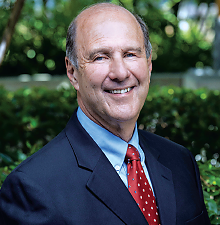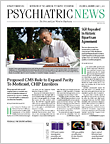Hypnosis is not just a mysterious parlor trick but can play a role in clinical practice in the hands of a trained practitioner, said David Spiegel, M.D., a professor and associate chair of psychiatry and behavioral sciences, director of the Center on Stress and Health, and medical director of the Center for Integrative Medicine at Stanford University School of Medicine.
“Hypnosis may be the oldest Western conception of psychotherapy,” said Spiegel in a recent lecture sponsored by the National Center for Complementary and Integrative Health, part of the National Institutes of Health. Sigmund Freud, for example, experimented with hypnotism before switching to free association.
Hypnosis, despite the origins of the word, is not sleep, Spiegel said. “Hypnosis is a state of aroused, attentive, focal concentration with diminished peripheral awareness.” The subject focuses attention and is less aware of context.
“Suggestibility in hypnosis has been overstated, but subjects are less likely to critically judge what you say to them,” said Spiegel, comparing the state to the “imagery” and “visualization” that athletes often engage in prior to an event.
Not everyone can be hypnotized easily, he noted. One in three adults cannot be hypnotized at all, but 10 percent to 15 percent are very hypnotizable, he said.
That difference has permitted scientific investigation of the phenomenon. Imaging studies have shown increased functional activity in the left dorsolateral prefrontal cortex and the anterior cingulate cortex (ACC) in subjects who are highly hypnotizable. The ACC is involved in attention, self-monitoring, and executive control—all functions that are critical for the hypnotic experience.
“We respond to perceptions in the posterior portion of the brain and manipulate language in the anterior,” said Spiegel. “Under hypnosis, we respond to language and manipulate perception.”
That control of the perceptual process is useful in clinical work by reducing pain and anxiety, as several of Spiegel’s studies have shown. One trial in women with metastatic breast cancer found that after one year, those trained in self-hypnosis recorded half the pain levels of a control group.
Another trial was conducted in patients undergoing a painful invasive renal procedure. Patients were divided into three groups. One group received standard treatment while the second got structured attention from a friendly nurse who provided encouragement and avoided negative language. The third group received a course of hypnotic relaxation.
Patients in the hypnosis group used just half the pain medication of those getting standard care, said Spiegel. “Their procedures also were completed an average of 17 minutes sooner and had fewer complications.”
Hypnosis had other benefits in this trial. The teams treating the hypnotized patients were less anxious, incurred fewer intraoperative negative events, and saved money, he said.
Hypnosis can also serve as an anxiolytic by inducing relaxation or dissociation or by alteration of sensory perception. The patient can be induced to feel warmer or cooler, for example, or to focus sensations on another part of the body.
Telling patients that “it’s all in your head” is a poor choice, he noted. Better to explain that coping with the situation at hand is a matter of how they manage the interaction between their mind and their body.
“Hypnotism is not taking away control from people,” he said. “It’s teaching people control.” ■
Spiegel’s lecture “Tranceformation: Hypnosis in Brain and Body” can be accessed
here.

